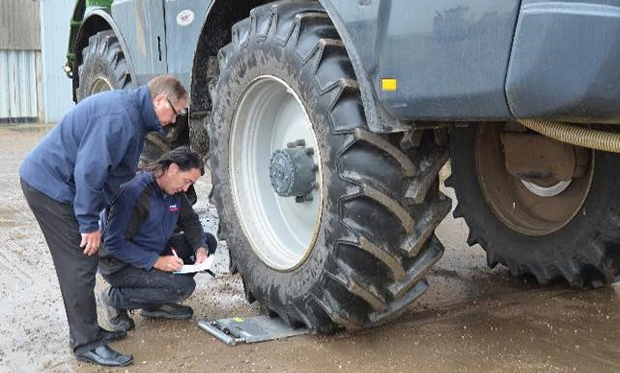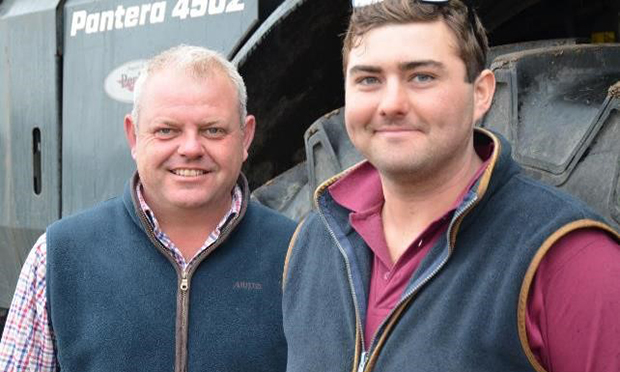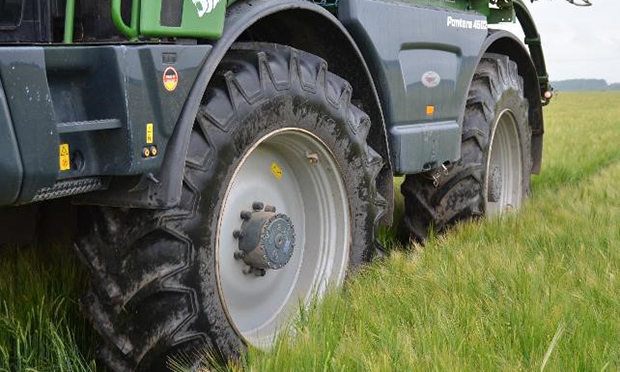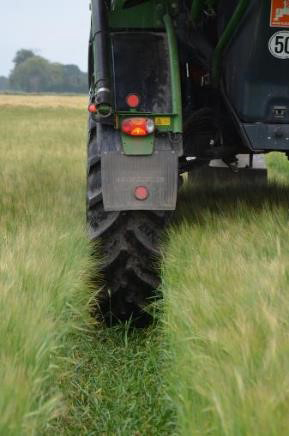Manufacturer and distributor help multi-site farming business to get the most from their tyres
Article written by Bush Tyres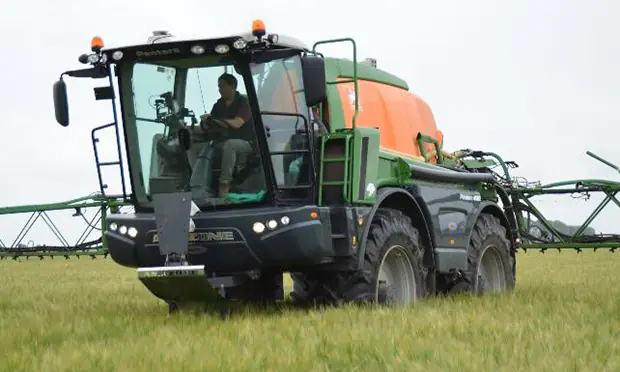
Managing tyres correctly has become a key aspect of operating machinery for Lincolnshire farming company E. W. Bowser & Son Ltd, which has benefited from a new soil awareness initiative developed by leading manufacturer Mitas Tyres and Bush Tyres, the leading independent tyre distributor in East Yorkshire, Humberside and Lincolnshire.
The initiative entitles customers who purchase four Mitas radial tyres to a free comprehensive service package which highlights the importance of correct tyre selection and set up. It includes free on-farm vehicle weighing, bespoke pressure calculation related to the proposed operations and ongoing advice on reducing compaction.
One of the first farming businesses to take advantage is E. W. Bowser & Son Ltd, who recently replaced the 520/85 R42 tyres which were fitted as original equipment to their three-year-old Amazone Pantera 4502. The Turkish-made tyres which were original equipment when it left the factory in 2014 had worn unevenly and were giving issues with braking, not what you need on a vehicle with a laden weight of over 16 tonnes, so in June 2017 Bush Tyres fitted a set of new Cultor RD01 520/85 R42 radials.
Although not yet widely known in the UK, Cultor tyres have a very strong pedigree, being manufactured in Europe by Mitas a.s., a leading manufacturer of agricultural tyres under the Mitas and Cultor brands. Approximately 80% of tyres manufactured by Mitas are delivered to customers in Europe, the company being a major supplier of radial agricultural tyres for new tractors and combines produced by the European plants of global leaders such as John Deere, CaseIH, New Holland, Claas and AGCO. One in four new tractors and harvesters in Europe is fitted with tyres produced by Mitas, the leading European supplier of combine tyres.
Cultor RD tyres benefit from the high-tech development which characterizes the Mitas brand, are competitively priced and of the highest quality. They offer a balanced combination of features which make them suitable for various terrain and agricultural machinery. Launched in December 2015, alongside the RD-02 and RD-03, the RD01 radials are designed to operate at lower pressures and in the case of E. W. Bowser’s Pantera 4502 self-propelled sprayer allow it to run with axle loads of up to 9.5 tonnes at up to 50kph.
Practical Advice:
The business farms approximately 1500 hectares of in-hand land over four farms up to 35 miles apart, stretching from Metheringham Fen just south of Lincoln in the west, across to the Lincolnshire Wolds and south to Old Leake and Leverton near Boston. Soil types are described by Farms Manager Robert Knight as ‘the full spectrum’, from heavy skirt and organic fen, to Wold chalk, blowing sand, heavy clay escarpment and Grade 1 silt. Cropping includes approx. 700ha of winter wheat, 140ha of winter barley, 250ha of oilseed rape, 140ha of sugar beet, together with 140ha of spring barley and 80ha of potatoes. The business also produces 800+ha of vining peas on rented land.Until 2014, E. W. Bowser & Son Ltd operated two 24m sprayers, one a 24m Knight which was based at Metheringham Fen, the other a 24m Househam based in the east. That year, the business replaced both machines with a new 4500-litre self-propelled Amazone Pantera 4502 equipped with 40m booms, RTK GPS auto-steering and automatic shut-off. That now applies all the ag"chems to combinable crops and sugar beet, as well as 50 per cent of the nitrogen in liquid form.
Outlining the benefits of the Mitas/Bush Tyres initiative Robert Knight states:
"The recent introduction of 140ha of spring barley to extend our rotations and help reduce blackgrass pressure means that we cannot block crop to the same extent that we have done in the past, which has resulted in more work and more traveling between farms. We’ve also delayed the start of autumn drilling until mid- or late-October to help reduce blackgrass pressure, which has made us even more conscious of the need to look after our soils and avoid compaction. Key staff have been trained so that they know more about soil structure and how to achieve this.
"We have dealt with Bush Tyres for years because we value the specialist advice and service which they provide. We operate seven tractors, two teleporters, four forklifts, eight trailers, combine and Pea viners as well as several vans and four-wheel-drives, so they play a key role in the smooth running of our business. It is a great benefit that all their vans are fitted with trackers, so their control centre in Boston can direct the nearest one to us and let us know when it will arrive.
"The reason why we wanted to involve Mitas Tyres was so that we understand more about tyre pressures and how to set them correctly to obtain the best performance in the field and on-road, as well as reducing fuel use and maximising the life of these new tyres."
Major Change:
Kirk Walker, Technical Manager for Mitas Tyres UK, visited E. W. Bowser’s Metheringham Fen farm shortly after the new tyres were fitted. He points out that while most farmers understand the need for good soil management and to limit the effects of using ever larger equipment in increasingly variable working conditions, they face one basic problem. Across the industry, little support is available to help them understand the relationship between factors such as tyre type, inflation pressure and tractive force, and ultimately to protect the soil, which represents the farming industry’s greatest asset.
These views are confirmed by Professor Dick Godwin of Harper Adams University who says that the UK cultivation landscape is facing a period of major change with massively conflicting demands placed on it. He believes that the dilemma of preserving soil structure and reducing energy consumption, at the same time as potentially using deeper cultivation to help control blackgrass, could change how we view traction and tyres in the future.
One of the biggest problems in current production systems is that around 85 – 95% of land undergoes at least one wheeling in a typical growing season using traditional tillage methods are used, while minimum tillage reduces that figure to around 65% and direct drilling to 45%. Although using larger equipment reduces the number of passes it adds extra weight. This is a key factor, as the difference in yield potential between a good, well managed soil and one with excessive wheelings or where ground pressure is not managed properly is around 20%. That alone underlines the importance of using high-quality tyres and knowing how to get the best from them.
Major Developments:
"In recent years there have been major developments in tyre technology which, if used correctly, can help farmers to manage this critical aspect of their business correctly," Kirk Walker states.
"The aim of the Mitas/ Bush Tyres soil awareness initiative is to encourage operators to think about their tyres and how these relate to type of work being carried out, not just at the time they are fitted but on an ongoing basis. This is important because as operations change, rotations demand different cultivation approaches and new equipment is purchased it is important to address the issues and decisions that need to be considered when these situations take place.
"We work with distributors and customers to set out the options which are available and help them choose the right tyres initially. We then provide a comprehensive two-year support package to help them understand how to better manage tyres and soils.
"Some operators, for example, do not fully understand that the latest High Flexion (VF) tyres allow lower pressures to be used in the field to minimise soil damage, without having to add pressure for road use. The relationship between tyre types, operating pressure and wheel slip is often misunderstood, as well as their impact on soil structure and fuel consumption."
Under the Mitas/Bush Tyres initiative, once the best tyres have been identified and fitted, individual axle weights of the vehicle are recorded to determine optimum operating pressures for the work being done by the tractor, sprayer or other agricultural vehicle. A front axle alignment check is also carried out, as correct alignment reduces potential soil smearing in wet conditions, avoids premature wear and helps with fuel consumption. These essential first steps in proper set up are too often ignored.
Correct operating pressures can only be ascertained by using a weigh cell under each wheel and, in the case of a tractor, with the heaviest piece of equipment likely to be used plus any additional weights. Once these weights are known, adjustments can be made to achieve the correct balance between front and rear axles and set the correct pressures to obtain the most efficient field performance, combined with the safest operation on the road.
A further two such pressure checks will take place in the two years following fitment, with advice offered wherever appropriate and up to four free puncture repairs provided during that period. In addition, customers also receive a free pair of Mitas overalls, a Mitas polo shirt, Mitas cap, torch and technical data book.
Correct Set Up:
"In the case of E. W. Bowser’s Amazone sprayer, we carried out a weigh check and advised how best to set the machine up for the type of work that it is doing and the operating conditions," Kirk explains. "We set the tyre pressures at the minimum level for the weight being carried, taking account of the road work that the machine will be doing.
"The overall weight of the sprayer with a full tank of water was 16.4 tonnes, distributed 8400kg on the front axle, 8000kg on the rear. At this weight, the tyre pressures can be dropped right down from the 30psi normally used for road work with a full tank (26psi if a full load is not being carried), to just 14psi in the field, as these tyres are designed to run at that pressure up to 10kph. That provides a huge footprint which spreads the weight of the machine over a much greater area and greatly reduces its impact on the soil, improves traction, minimises wheel slip and helps to reduce the stresses on the machine’s transmission and other components."
The message is to choose your tyres wisely, seek advice on the best options, make sure you have a distributor or manufacturer who can support you fully and put into practice the advice which is available.
For further details on Mitas tyres click here
TOP TIPS FOR TYRES
1. Use the right pressure
The single most important thing you can do to minimise soil compaction is to use the right pressure for the job. To do that requires an understanding of the relationship between inflation pressure and ground pressure. Inflation pressure is linearly related to ground pressure, so the harder your tyres the more damage you’ll inflict on your soils through compaction. Furthermore, such compaction is not restricted to the top layers of soil. Studies have clearly shown it can extend up to 2.0m deep, so such harm is significant and long lasting.
Most fieldwork and cultivations depends on achieving a balance between pressure and slippage. The lower the inflation pressure, the greater the footprint and the more the weight of tractor and cultivation equipment will be spread across the ground. But, take it too far you’ll lose traction and risk damaging the sidewalls of the tyre through excessive flexing.
For standard radial tyres on a mid-horsepower tractor on the field without equipment, around 15-18 psi on the front and 18-20 psi on the rear is a good start. You can the finetune it to suit conditions and the job in hand. A good working slippage rate would be around 15-25% but above this and you’re going to be smearing soils particularly in wetter conditions. If conditions are good, you can adjust tyre pressures to suit the job being done and get the best performance from your tyres."
2. Measure axle weights
A far more accurate way to assess the optimum pressure for the job is to measure axle weights with equipment hitched up to the tractor, ideally with the heaviest equipment and front weights you will be using.
With modern four-wheel drive tractors 60% of the weight should be over the rear axle, 40% over the front. To achieve this, you’ll need to measure the weight carried by each wheel, then use the manufacturer’s recommendations to work back to the lowest safe working pressure. Adjust these to the speed of travel and weight being carried.
3. Change tyres pressures when required
Operators’ reluctance to change tyre pressures between road and field use is one of the main reasons why compaction has become such an issue. Work out what pressure you need for the road to get to the field and then what the optimum value is once you get in the field. The problem is that most operators do not have access to a compressor to re-inflate tyres for the journey back. This is something you might need to address, but with significant crop production losses even from medium compaction a central inflation system is worth considering, or at the very least a tractor-mounted compressor.
4. Think VF
If this is not practical consider fitting VF tyres, like the Mitas HC1000, HC2000 and HC3000 ranges which cover all the popular standard, row crop and harvester sizes. They allow you to use optimum inflation pressure for field work but are safe on the road because their sidewalls are designed to deform much more than conventional tyres without causing structural damage to the carcase. This means that operating pressures can be significantly reduced, giving a much larger footprint in the field to minimise soil damage and improve traction, but without having to re-inflate for road work.
5. Don’t persevere with worn tyres
Finally, recognise when it’s time to change your tyres. If lugs are worn or rounded you won’t get the same grip, which automatically means higher slippage, soil damage, wasted fuel and lower outputs.
Peter Kemp (left), Sales Manager for Bush Tyres, and Kirk Walker, Technical Manager, Mitas Tyres Ltd, check the weight on each axle of E. W. Bowser’s Amazone self-propelled sprayer after four new Cultor tyres had been fitted.
"We are very conscious of soil compaction in the field," states Robert Knight (left), pictured here with sprayer operator George Moses (right).
The new 520/85 R42 Cultor RD01 radials will remain on the sprayer all year round.

At this years LAMMA to be held at the Birmingham NEC, Ascenso Tyres UK will be launching a new a brand new App especially designed to provide in depth knowledge on tyre pressures, load ratings and best uses for their Ascenso Tyres

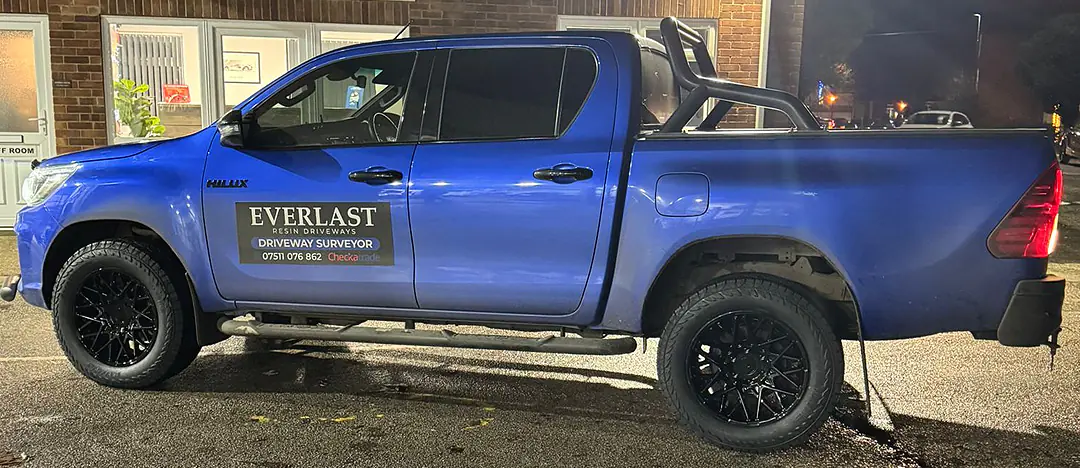



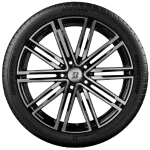 Tyres
Tyres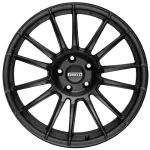 Services
Services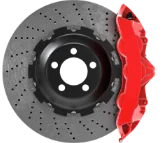 Fast Fit
Fast Fit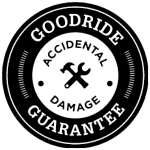 Offers
Offers